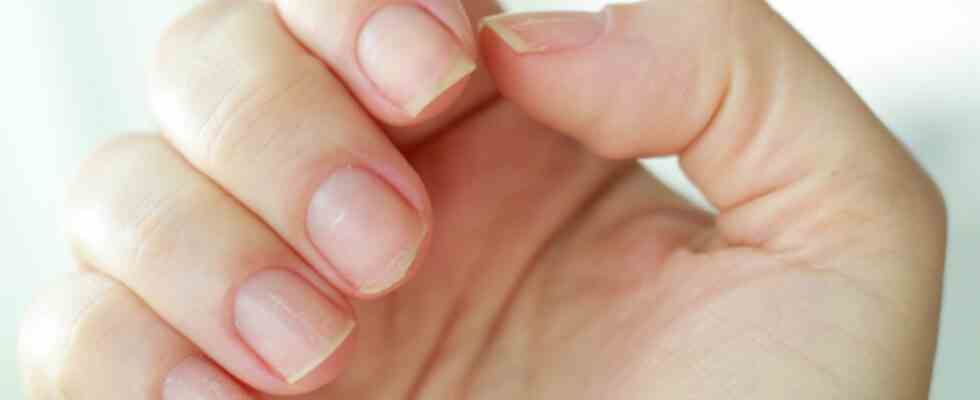Fingernail changes can indicate diseases
Our fingernails are considered reflection of general health. Changes can indicate certain health problems. However, some abnormalities are completely normal and part of the aging process. A dermatologist explains which changes in the fingernails can indicate which clinical pictures.
dr Rachel Miest is a dermatologist at the renowned Mayo Clinic (UNITED STATES). In a recent article by the institution, the dermatologist provides information about which nail changes are associated with which diseases and how fingernails change with age.
Fingernails are a reflection of health
Many people develop horizontal or vertical ones over time grooves or ridges on the fingernails. However, according to the dermatologist, such changes are common in most cases completely normal and part of the aging process.
“The fingernails are a wonderful reflection of a person’s overall health”stressed dr crap. According to her, there are some abnormalities on the nails health problems there. These include, for example:
- spotted nails (Dimpled nails): pitting on the nails, small indentations in the nails
- watch glass nails: Nail deforms rounded, enlarges and bulges outward over a long period of time
- spoon nails: Nail plate sunken inwards
- Beau lines (Beau-Reil ridges): horizontal ridges running across the entire nail plate
- detachment of the nails: Fingernail detaches from the nail bed
- Yellow Nail Syndrome: Thickening and yellowing of the fingernails
- frosted glass nails (Terry’s nails): whitish-cloudy discoloration of the nails
Spotted nails or dimpled nails
tiny depressions and indentations in the nails often occur in people who are at psoriasis Suffer. However, such nail holes are also associated with connective tissue diseases such as that Reiter Syndrome and the Autoimmune disease alopecia areata in connection.
watch glass nails
watch glass nails occur when the fingertips enlarge and the nails usually curve around the fingertips over a period of several years. They are often one result of lack of oxygen in the blood and can be a sign of an existing pulmonary or heart disease be.
spoon nails
at spoon nails (koilonychia) the nails are soft and a Deepening in the nail platewhich is large enough to hold a drop of liquid.
Spoon nails can be a sign of iron deficiency anemia or a liver disease called hemochromatosis be where the body absorbs too much iron. In addition, spoon nails can be an indication of heart disease or a hypothyroidism be.
Beau lines
Beau lines occur when nail growth is interrupted by injury or serious illness.
On the one hand, they can occur as part of a severe infectious disease with high fever, such as scarlet fever, measles, mumps or pneumonia develop. However, Beau lines can also occur on uncontrolled ones diabetes and indicate peripheral vascular disease. In addition, they are a sign of zinc deficiency.
detachment of the nails
At the so-called onycholysis the fingernails detach from the nail bed. The detached part of the nail becomes opaque and has a white, yellow, or green tint.
Detached nails are sometimes associated with injury or infection. In other cases, nail detachment is a reaction to certain medications or products, such as nail hardeners or glues.
thyroid disorders and psoriasis can also cause the nails to detach from the nail bed.
Yellow Nail Syndrome
At the Yellow Nail Syndrome nails thicken and regrowth slows down. In addition, the fingernails turn yellowish. The syndrome is often a sign of a respiratory diseasefor example one Chronic bronchitis. Yellow nail syndrome can also occur with a swelling of the hands (lymphedema) related.
frosted glass nails
With the so-called terry nails the nails appear white and cloudy. A narrow pink band often develops at the apex.
Frosted glass nails are often due to the normal aging process. In some cases, however, they can indicate a serious underlying condition, such as diabetes or liver, heart, and kidney disease. (vb)
Author and source information
This text corresponds to the requirements of medical specialist literature, medical guidelines and current studies and has been checked by medical professionals.
Author:
Graduate editor (FH) Volker Blasek
Important NOTE:
This article contains general advice only and should not be used for self-diagnosis or treatment. He can not substitute a visit at the doctor.

